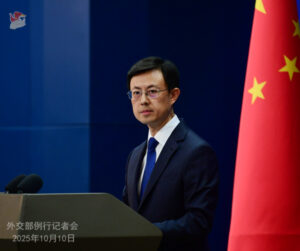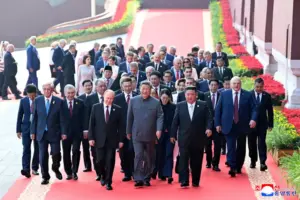Breaking Beijing’s rare earths advantage
China’s rare earths advantage endures, despite tightening domestic standards and industry consolidation. The International Energy Agency reports a 6–8 per cent rise in rare earth demand in 2024 and warns that supply concentration will remain a core vulnerability without greater investment in partner economies.
While China’s advantage is not new, its mechanisms have evolved. The 2010 rare earths dispute offers important lessons but requires careful framing. After a collision near the disputed Senkaku/Diaoyu Islands and Japan’s detention of a Chinese captain, Japanese firms reported rare earth shipment stoppages. Chinese officials denied imposing an embargo, arguing that already-tightening export quotas were simply being fulfilled, though this explanation did not stand up to WTO scrutiny in 2014. Getting the timeline right matters because in 2025, leverage is more often exercised through licensing delays and quota management rather than overt export bans.
Japan’s response went beyond litigation. Tokyo paired the WTO case with concessional finance, offtake agreements, processing expertise and distribution partnerships. The Sojitz–JOGMEC–Lynas model — a strategic partnership to secure stable rare earth supplies launched in 2011 and extended to heavy rare earths in 2023 — remains a template to de-risk supply while shortening user qualification cycles by tying capital to physical delivery across the supply chain.
But dependence in 2025 looks different than what it did a decade ago. Beijing has consolidated state champions, tightened export quotas and in April 2025, mandated special licences for selected rare earths and magnets used in defence, energy and automotive supply chains. Mid-year reports indicate that China’s first 2025 mining and smelting quotas were issued without public announcement, underscoring tighter administrative control. Beijing’s rare earths leverage now moves through both production and paperwork.
Market signals alone will not overturn China’s leverage. Price volatility deters investment in rare earths infrastructure that take years to build but can be undermined within months by a downturn. Policy must move beyond simply announcing new mines to close financing gaps and compress qualification timelines.
Economies seeking to diversify rare earths supply can follow three principles. First, countries should focus on building faster, more flexible supply chains, particularly in the midstream. Tools like procurement contracts, tax breaks and export credit can be used to underwrite costs for companies working with multiple suppliers. Contracts could reward designs that are not single-source and funding should be allocated to shared test lines so smaller firms can pass magnet and motor certifications. Where possible, rare earth offtake agreements should aim to bring more processing and magnet-making capacity into Southeast Asian and Australian hubs.
Second, economies should scale what worked for Japan. Instead of only investing in mines, finance should support the entire supply chain. Structured offtake agreements that bundle technical services like processing know-how, quality assurance and long-term pricing mechanisms can reduce commercial risk.
Third, licensing speed should be treated as a policy variable. Established dispute settlement mechanisms are poorly suited to addressing uncertainty created by permits, quotas and opaque administrative processes. Partner countries should establish clear permitting timelines, agree on shared environmental standards and recognise audit processes reciprocally. Greater transparency around quota issuance and licensing timeframes would limit the ability of any single actor to influence supply timelines through paperwork alone.
But short-term bargains still matter. In a fragmented trading system, governments will trade targeted concessions for sensitive inputs. While these deals can buy time and keep factories open, they are weak foundations for security if left alone. Buffers such as stockpiles, joint purchasing agreements and price floors can soften shocks and stabilise investment while capacity is built, with these tools already under discussion in G7 capitals and Brussels.
Technology may also ease pressure at the margins. Rare earth-free magnets are moving from labs to plants, led by Niron Magnetics with backing from major automakers and US programs. But with optimistic timelines forecasting a limited market share by the late 2020s, defence, automotive and grid buyers will still need qualified rare earth magnets at volume. This puts the burden back on building midstream capacity, aligning standards and attracting finance.
Countries should take a clear-eyed reading of leverage in rare earth supply chains. Instead of trying to litigate it out of existence, economies should build and qualify diversified capacity fast enough that no single actor can dictate delivery windows. Governments can use dispute settlements where applicable, but the policy focus should be placed on bolstering midstream speed, reducing redundancy and improving transparency.
This includes combining multi-year offtake agreements that anchor magnet production lines in partner hubs, shared testing infrastructure and mutual recognition of standards. Public support should focus on building buffers that absorb short-term shocks without replacing the need for real capacity. Japan’s response after the 2010 rare earth crisis shows that this mix can work and 2025 projections underscore the urgency of putting these measures in place.
Apoorba Banerjee is a Malaysia-based country operations strategist overseeing industrial bearings operations across ASEAN, with a focus on bearings, supply chain and energy resilience.





